Standard dart board distances are 7′ 9¼” (steel-tip) and 8′ (soft-tip). Learn about the official height and explore professional setup advice in our guide.
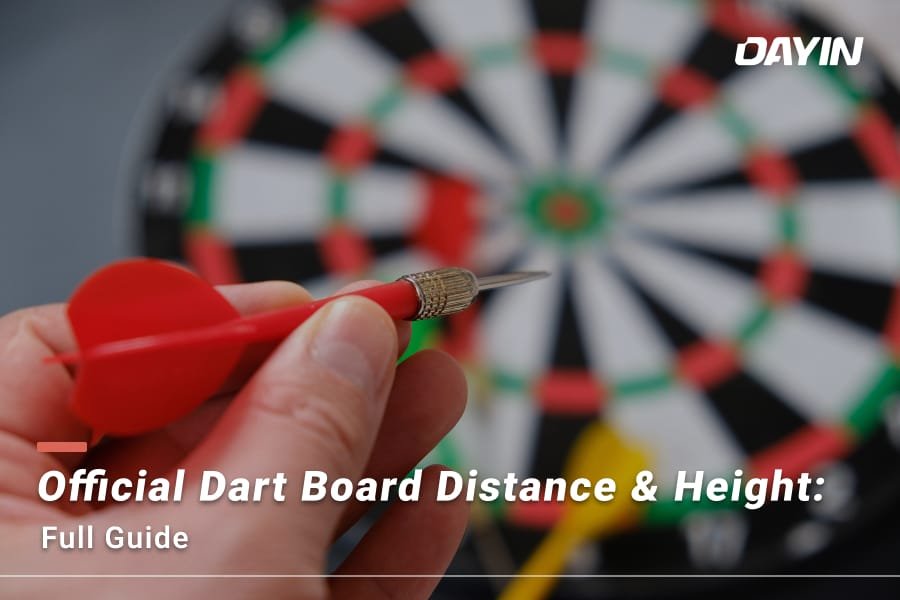
Proper dart board placement is more than just a rule — it’s crucial for accuracy, fairness, and safety in every game. Positioning your dart board at the correct height and distance ensures a level playing field, protects walls and flooring, and makes every throw more enjoyable.
In this guide, we’ll cover the official dart board distances and heights, walk you through different mounting methods, and share tips for selecting the best location so you can set up your dart board like a pro.
What are the Official Dart Board Measurements?
Before we delve deeper into these measurements, here is a quick look at the dart board regulation distance, including both the horizontal and diagonal throw line, as well as the standard height:
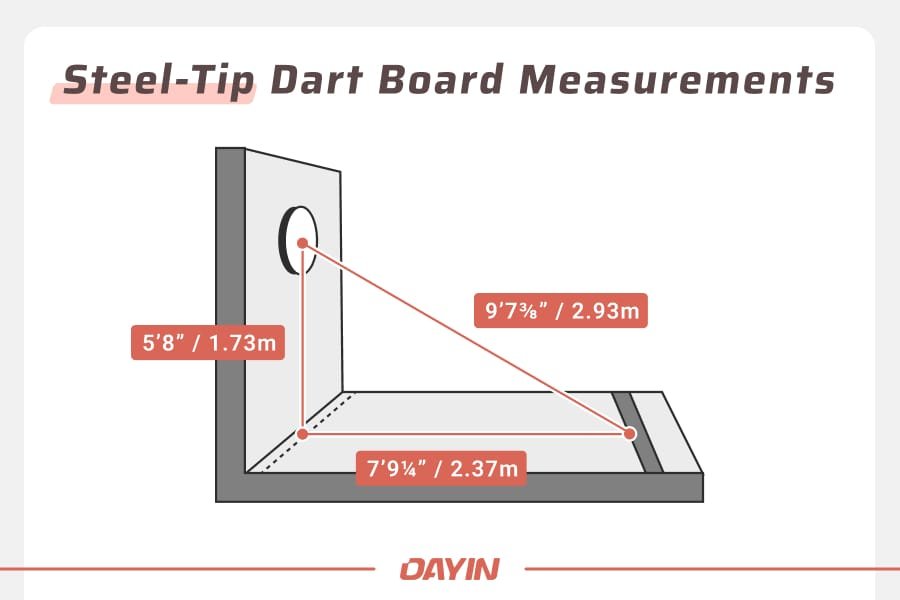
![Offical Dart Board Distance, Height, & How to Hang Them 3 For standard measurements, soft-tip dart boards should be set at a 5 feet 8 inches (1.73 m) height, an 8 feet (2.44 m) distance horizontally, and a 9 feet 9½ inches (2.98 m) distance diagonally.]](https://www.madeindayin.com/wp-content/uploads/2025/07/DAYIN-10.-dart-board-distance-image-2.jpg)
Standard Dart Board Height
The official dart board height is 5 feet 8 inches (1.73 m) from the floor to the center of the bullseye. This measurement is the same for steel-tip and soft-tip dart boards alike. It mimics the average adult’s eye level, making it ideal for comfortable and accurate play.
With that in mind, it is best to measure the height and hang the dart board first. This will make it easier to measure the throwing distance for the dart board later on.
Standard Dart Board Distance (Horizontal)
The official throwing distance for steel‑tip and soft‑tip darts varies. According to regulations, steel‑tip dart boards require a horizontal distance of 7 feet 9¼ inches (2.37 m), while soft‑tip dart boards use a distance of 8 feet (2.44 m).
Also, avoid the mistake of measuring the dart distance from the wall. You should measure the throw line distance from the dart board’s face instead. To get an accurate measurement, drop a string or plumb line from the board’s surface to the floor and then measure out from that point. You can also choose to measure the depth of your board and add that to the distance from the wall.
Standard Dart Board Distance (Diagonal)
In addition to measuring the floor distance, you can also verify your setup by checking the diagonal measurement from the center of the bullseye to the throw line. The official diagonal measurement for steel‑tip dart boards is 9 feet 7⅜ inches (2.93 m), while soft‑tip dart boards require 9 feet 9½ inches (2.98 m).
To measure this, have one person hold a tape measure at the bullseye and stretch it to the edge of the throw line. This is especially helpful for making sure both the height and distance are accurate.
How to Hang a Dart Board? Step-by-Step Guide for 3 Mounting Methods
In this section, we will explore 3 ways for you to hang a dart board. The first method is mainly for steel-tip dart boards, while the other two are frequently used for soft-tip dart boards.
Before you get started, gather all the tools you need, including a tape measure or oche tape for accurate measurement, a level for alignment, a chalk or pencil for marking, and a screwdriver or hammer to install the hardware.
1. Mounting Dart Boards with U-Shaped Brackets
A U‑shaped bracket is one of the most common and reliable ways to mount a steel-tip dart board. Follow these steps to install it:
Step 1. Mark the Bullseye Position: Begin by precisely marking the wall at 5 feet 8 inches (1.73 meters) from the floor. This point will align with the bottom of the U-shaped channel on your wall bracket. You should also use your level to ensure this mark is perfectly horizontal.
Step 2. Attach the Stabilizers: On the back of the dart board, attach the metal mounting feet using the stabilizer screws. If your dart board uses plastic spacers, tap them in with a hammer. These stabilizers should be spaced out in a triangular pattern for balance.
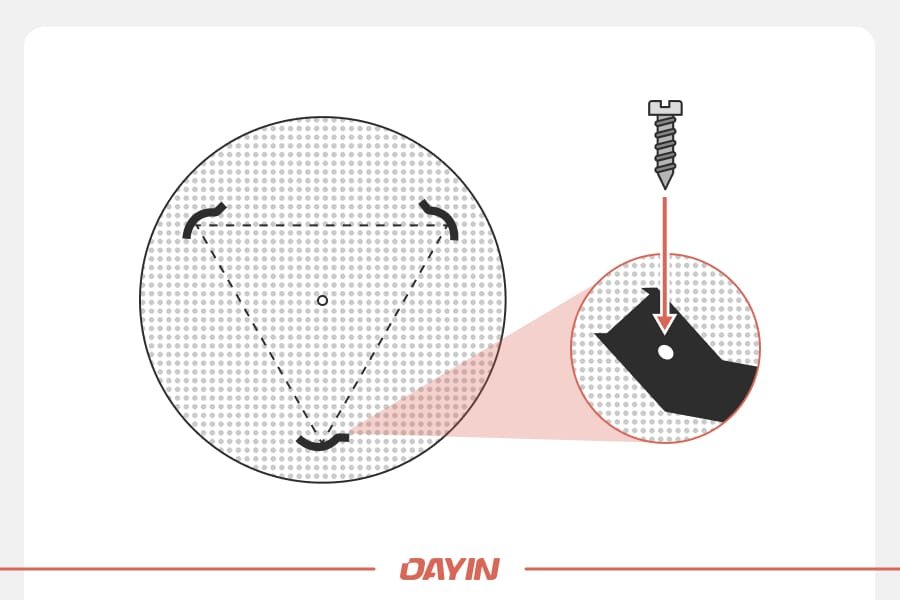
Step 3. Insert the Center Screw: Drive the center screw into the pre‑drilled hole on the dart board, leaving enough space for it to rest securely on the bracket. Do not overtighten at this point. You can also check out the best practices for screw tightness below.
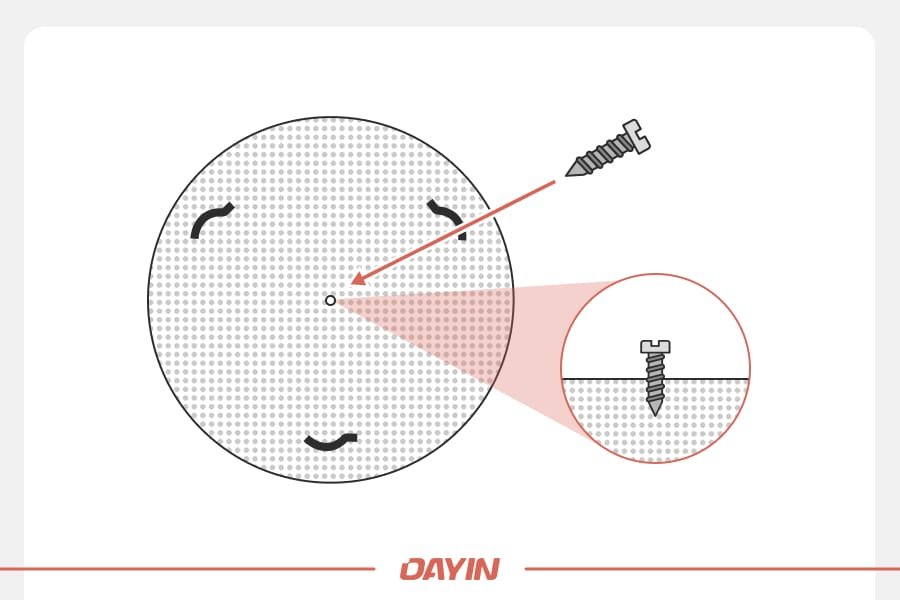
Step 4. Secure the Bracket to the Wall: Position the bracket so its channel lines up with your mark. Use wall anchors if needed, especially when mounting on drywall. Then, screw the bracket firmly into place.
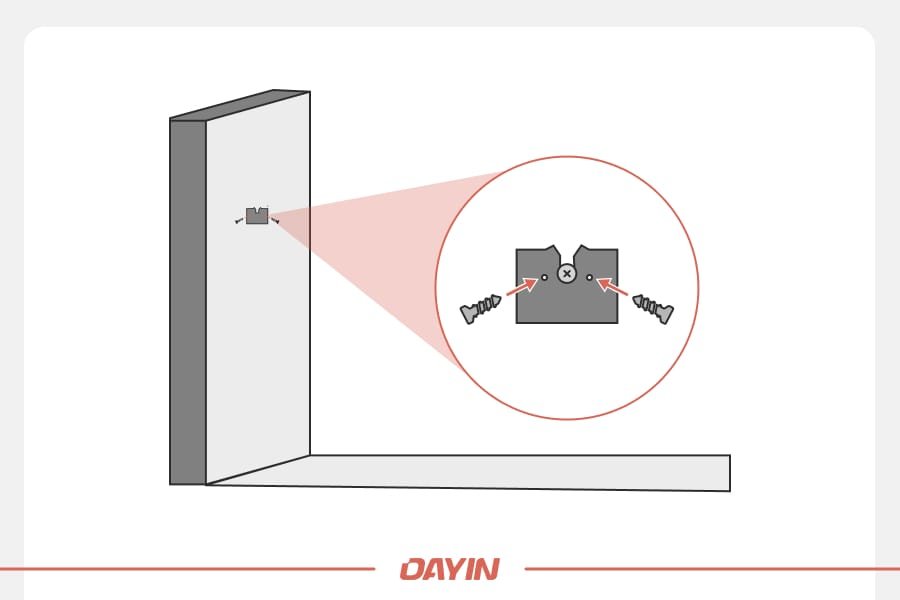
Step 5. Hang the Dart Board: Carefully lift your dart board and slide the exposed center screw into the U-shaped slot of the wall bracket. The board should sit flush against the wall without wobbling.
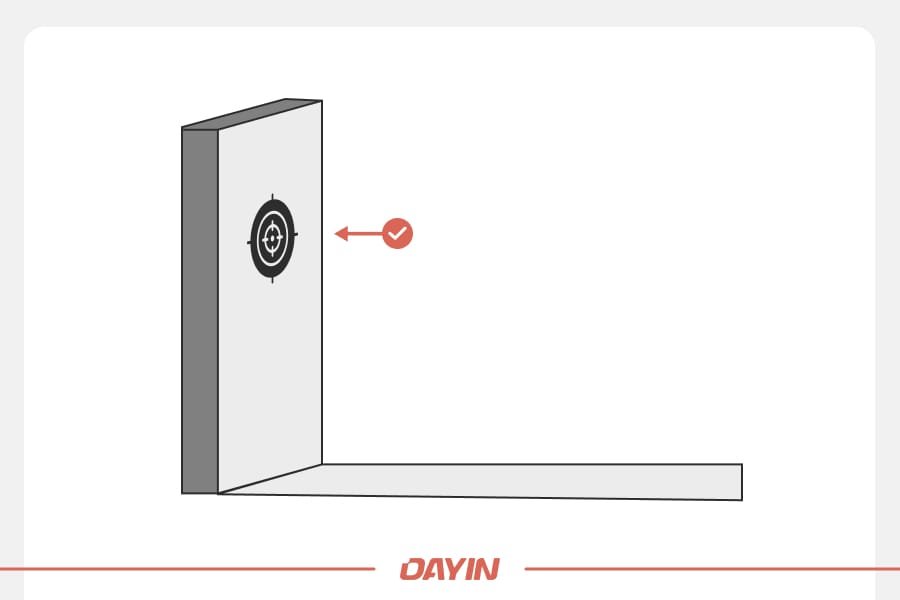
Step 6. Mark the Throw Line: Once your dart board is securely mounted, use an oche tape or a standard tape measure to mark your throwing line. Remember to measure 7 feet 9 ¼ inches (2.37 meters) for steel-tip darts or 8 feet (2.44 meters) for soft-tip darts, always from the face of the dart board.
Best Practices for Screw Tightness
Adjusting the center screw depth is critical for a stable mount. If it’s too tight like in the left screw below, it won’t hook properly onto the bracket. Too loose like the right screw, and the dart board may tilt or wobble. Aim for a position where the bracket holds the dart board snugly against the wall, like the middle screw. It may take a few adjustments to find the perfect fit.
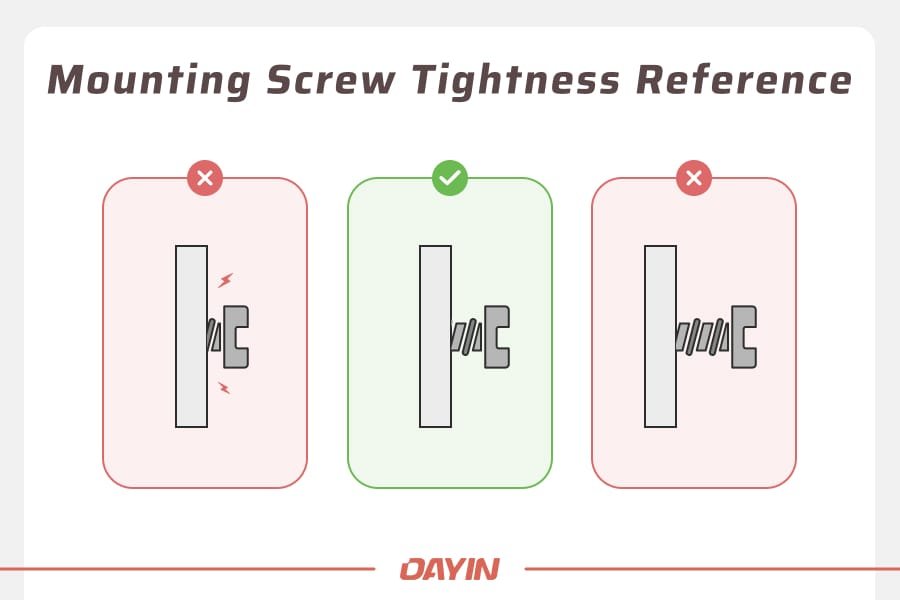
2. Mounting Dart Boards with Disc-Shaped Brackets
The disc‑shaped bracket method is a simpler, more modern way to mount dart boards, especially soft-tip ones. Its design eliminates much of the guesswork and fine‑tuning required with traditional U‑shaped mounts, making it ideal for quick and secure setups. Here’s how to mount it:
Step 1. Mark the Bullseye Position: Measure 5’8″ (1.73 m) from the floor and mark the spot.
Step 2. Attach the Bracket to the Wall: Position the center hole of the bracket on the mark, using a level to ensure it’s straight. Then fasten the six mounting screws (and wall anchors if needed) into the corresponding holes to fix the bracket securely in place.
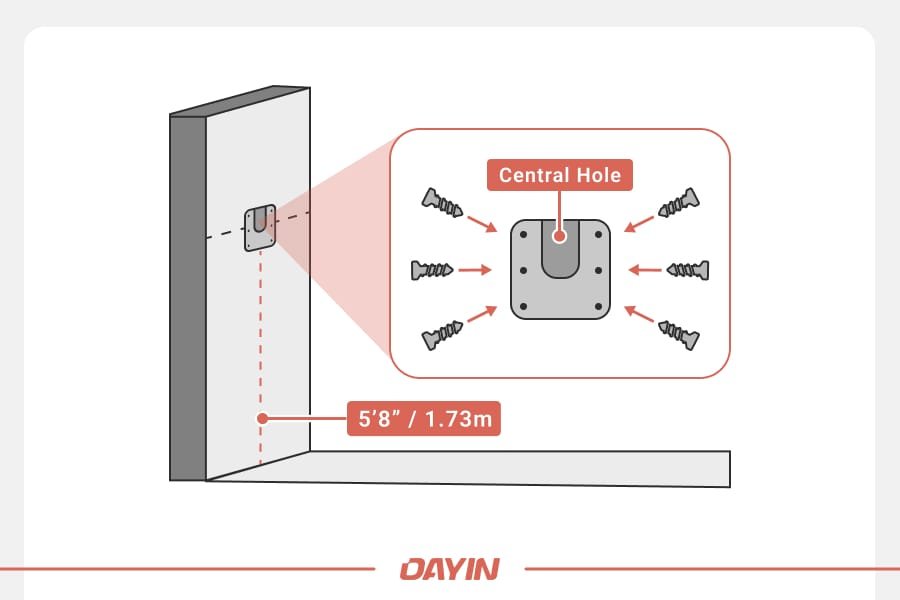
Step 3. Install the Disc on the Dart Board: Position the disc bracket in the center of the dart board’s back and secure it with the four stabilizer screws. Check that it is centered and tight.
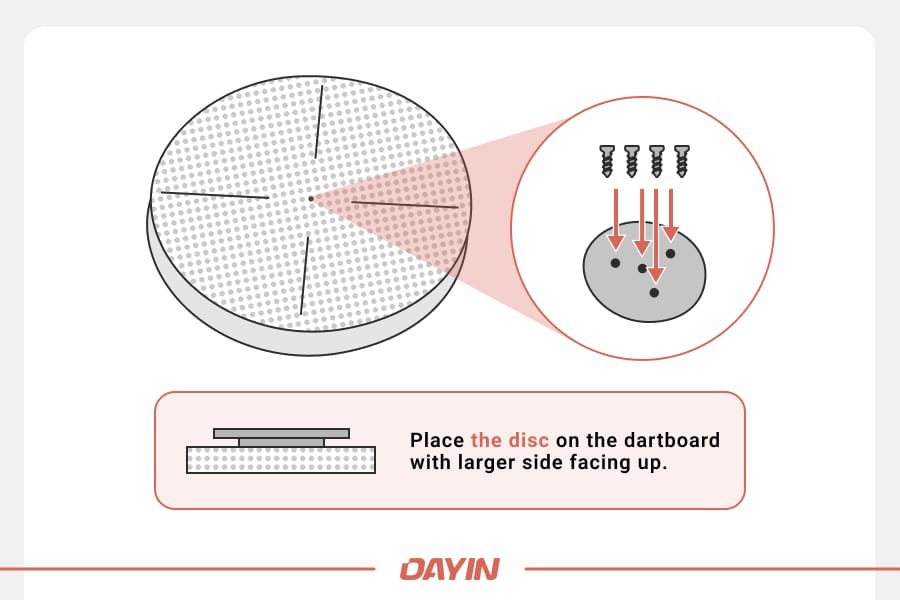
Step 4. Hang the Dart Board: Slide the dart board’s disc down onto the bracket until it rests securely. Confirm the dart board sits flush and doesn’t wobble.

Step 5. Mark the Throw Line: Use a tape measure or oche tape to mark the official throw line distance (7’9¼” for steel‑tip or 8’ for soft‑tip).
3. Mounting Dart Board Cabinets or Machines
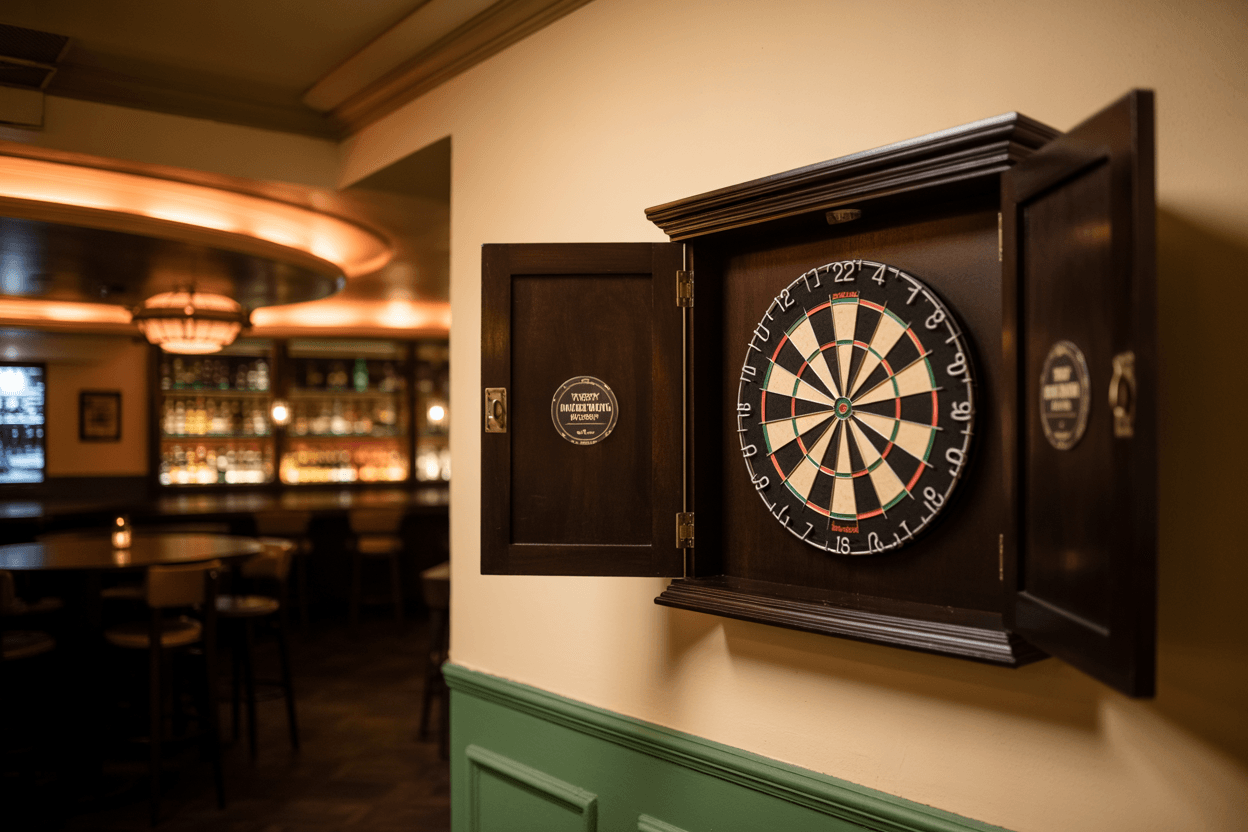
Cabinet-style setups are a fantastic choice for soft-tip dart boards as they protect walls from stray darts, offer built‑in storage for darts and accessories, and add a polished, attractive look to any space. This is how to mount one securely:
Step 1. Mark the Bullseye Position: First, identify where the bullseye of the dart board will sit inside the cabinet once it’s mounted. Mark this spot on your wall at the regulation 5 feet 8 inches (1.73 meters) from the floor.
Step 2. Position the Cabinet: Hold the cabinet against the wall with its center aligned to your mark. Then, Mark the mounting hole positions, making sure the cabinet doors have enough space to open fully.
Step 3. Drill and Install Anchors: If no pre‑drilled holes are present, drill four holes (one near each corner, roughly 16 inches or 41 cm apart). Install wall anchors if required for a strong, stable fit.
Step 4. Secure the Cabinet: Screw the cabinet firmly into the wall, making sure it is level both horizontally and vertically.
Step 5. Attach the Dart Board: Once the cabinet is securely fastened, mount your dart board inside it using the cabinet’s integrated bracket system. Double-check that the dart board’s bullseye is still precisely at the 5′ 8″ regulation height. Make any necessary micro-adjustments.
How to Choose the Best Place to Hang a Dart Board? 4 Key Considerations
Selecting the right location for your dart board goes beyond just measurements. By considering factors such as clearance space, wall surface, flooring, and lighting, you can make every game more enjoyable and worry‑free.
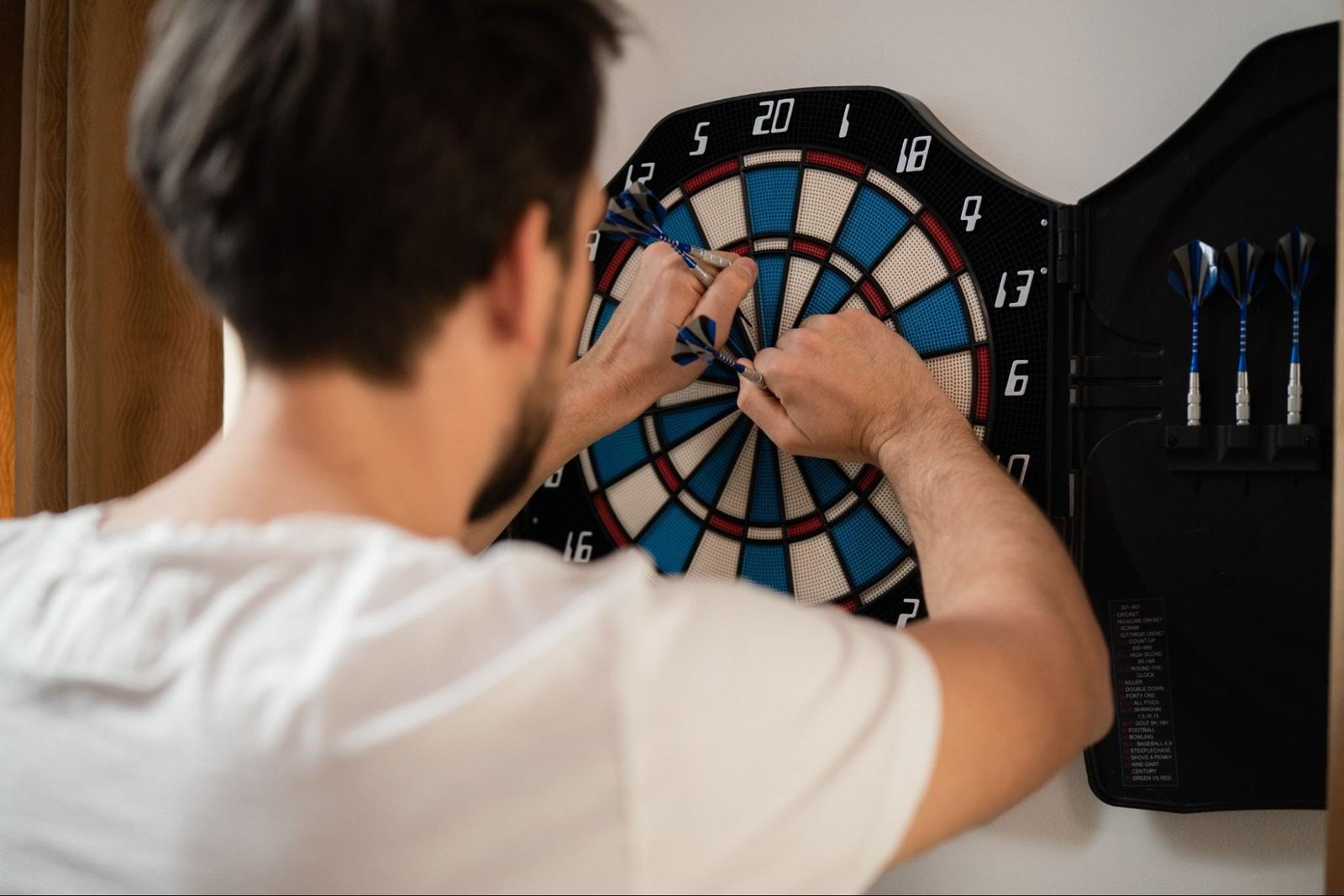 Source: Freepik
Source: Freepik
1. Large Surrounding Space
Choosing a spot with enough space around the dart board is vital for both safety and comfort. Ideally, you’ll want at least a 3.5 feet by 3.5 feet area (approximately 1 meter by 1 meter) of clear wall space for the dart board and any backing or cabinet.
Những floor area in front of the board should be roughly 5 feet (1.5 meters) wide and 11.5 feet (3.5 meters) long, giving players plenty of room to stand and throw without feeling cramped.
Besides, it’s best to avoid walls near windows or fragile furniture, as this can help prevent accidents or damage caused by stray darts.
2. Softer Wall Material
Hanging a dart board is much simpler on softer walls, like drywall or wood, where screws and anchors grip easily Softer surfaces also help reduce noise both during installation and throwing, making it ideal for spaces where sound can be an issue. Some players may opt to use dart board surrounds to dampen the sound and protect walls at the same time.
If you’re mounting a dart board on harder materials, like concrete or brick, use masonry screws (such as Tapcon anchors) for a secure fit. Another option is attaching a plywood backboard first, which gives you a smooth surface for the dart board and adds stability. For those unable to drill, a strong, commercial‑grade adhesive can also be used, but it’s best suited for permanent installations.
3. Anti-Slip & Protective Flooring
The flooring around your dart board is just as important as the wall. An anti‑slip surface gives you a stable footing and reduces the risk of accidents, especially when focusing on a precise throw.
It’s also worth considering how the floor will hold up if a dart falls. Hard surfaces like concrete or tile can quickly damage dart tips, while softer flooring like wood or vinyl can get punctured.
To protect both your floor and darts, use a thick dart mat or area rug. This also serves as a convenient way to mark your throw line precisely.
4. Sufficient Lighting
Good lighting is vital for a dart setup, making it easy to see every segment of the board clearly and reducing eye strain during play. Ideally, use dedicated dart board lighting or adjustable spotlights that illuminate the surface evenly, minimizing shadows and glare.
In terms of position, place the light directly above or slightly in front of the dartboard so it shines straight onto the target area. This setup allows every throw to be precise and enjoyable, regardless of the room’s overall brightness.
FAQs About Dart Boards
Q1. Can I adjust the dart board height and distance for children?
While official competitions mandate standard dimensions, it’s perfectly acceptable to modify dartboard height and distance for younger players at home.
For instance, younger players (around ages 6-10) usually reduce the throwing distance to roughly 6 feet for comfort. You can also lower the dartboard so the bullseye is closer to the child’s eye level, making it easier to aim and retrieve darts safely.
As kids grow, you can gradually move the dartboard and throw line closer to official measurements, helping them build their skills while keeping safety a priority.
Nevertheless, always supervise young children when playing darts, making sure they don’t stand too close, as darts can bounce out and cause injury.
Q2. Can I hang a dart board without nails or screws?
Yes, if you’re renting or want to avoid putting holes in the wall, you can use several alternatives.
Strong 3M Command Hooks or heavy-duty double-sided adhesive tape can offer a solution for lighter dart boards, as long as they adhere to the weight limits. This is how most casual players hang dart boards at home nowadays.
For a more professional and convenient solution, consider a free-standing dart board stand, which allows you to set up and adjust the dart board height and position with ease.
Q3. How to choose the best dart boards?
When choosing a dart board, consider how often you’ll play and where it will be used. Here are some recommendations to help you match the quality and design to your skill level and needs:
- Serious Practice or Competitive Play: A premium bristle dart board made from high‑quality sisal offers durability, reduced bounce‑outs, and a longer lifespan.
- Casual or Home Use: A more affordable option with slim wiring can be ideal while still providing solid performance.
It’s also worth checking if the dart board meets official size standards, especially if you plan to practice for tournaments.
Find the Best Dart Board at DAYIN
Whether you’re setting up a dart board for practice, competition, or casual play, DAYIN has the ideal solution for your space. As a trusted dart board manufacturer with over 20 years of experience, we deliver quality boards that balance durability, precision, and design. Contact us today to learn more about our customizable dart boards and services!
